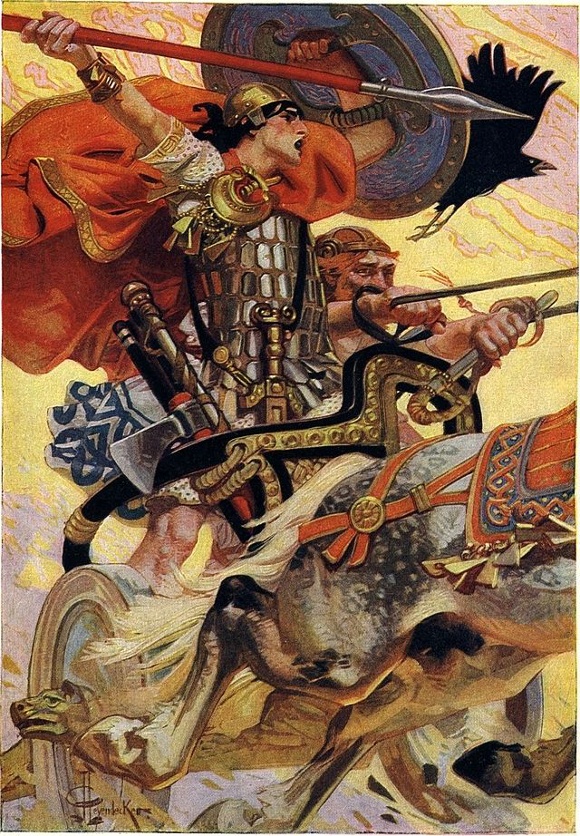Dubliners Contents
Resurgent Irish culture
A failed nation
In one sense, by the end of the nineteenth century, Ireland had become a despondent, stagnant culture:
- Its many rebellions had failed to achieve all they were meant to accomplish
- It had suffered devastating famine and seen the population decline by thousands in its aftermath as the younger generation emigrated
- The quest for Home Rule had not succeeded and all the hope invested in its leader, Parnell, died with him when he passed away in 1891
- Irish people were commonly stereotyped as buffoons, uneconomically bogged down in their peaty past and usually resorting to alcohol in order to drown their sorrows.
It all made for a sad contrast with their prosperous neighbour Great Britain, the world leader of nineteenth century industrialisation.
The Irish revival
 Perhaps in reaction to these failures, many educated Irish thinkers sought to re-assert the vitality of Irish culture. They brought to the fore the glories of ancient Irish chronicles about heroes such as Cuchulain, and aimed to refocus literary aspirations on Ireland and thus dispel the dominance of London (to which Irish writers such as Sheridan, Swift and Wilde had gravitated).
Perhaps in reaction to these failures, many educated Irish thinkers sought to re-assert the vitality of Irish culture. They brought to the fore the glories of ancient Irish chronicles about heroes such as Cuchulain, and aimed to refocus literary aspirations on Ireland and thus dispel the dominance of London (to which Irish writers such as Sheridan, Swift and Wilde had gravitated).
The cultural revival at the end of the nineteenth century was connected, in part, to the fight for independence from Britain. It was a way for the Irish to define their distinct identity. Societies and organisations were set up to celebrate and promote the Irish language (which schooling in English had almost eradicated), literature, sport, and costume. Yeats, whom Joyce met in 1902, was actively involved in this revival, setting up the Irish Literary Society in London in 1891, then the National Literary Society in 1892, and (in 1898) the Irish Literary Theatre, based in Dublin. These theatres and societies, along with independent publishers, focused on literature based on traditional Irish themes.
Joyce’s reaction to cultural nationalism
Although Joyce wrote about Ireland and the Irish, he was not a revivalist since he did not favour traditional Irish values and themes. If anything, he reflected a sense of decline in Irish society, which helps explain the negativity with which many in Ireland originally received Dubliners (see Literary context > Dubliners: Composition and publication). Joyce’s collection of vignettes of Dublin life can be seen to poke fun at those who used the revival purely to enhance their own situation. For example, in A Mother, Mrs Kearney exploits the revival in order to get better concerts for her daughter.
Recently Viewed
Scan and go
Scan on your mobile for direct link.